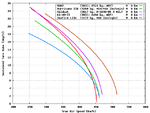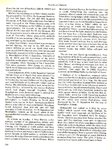Spitfire mk VB/Seafire mk IB/Seafire mk IIc/Seafire F mk IIIb vs Zero
Spitfire mk Vb/Seafire mk IB
Crew: one pilot
Length: 29 ft 11 in (9.12 m)
Wingspan: 36 ft 10 in (11.23 m)
Height: 11 ft 5 in (3.86 m)
Wing area: 242.1 ft² (22.48 m²)
Empty weight: 5,090 lb (2,309 kg)
Loaded weight: 6,622 lb (3,000 kg)
Max takeoff weight: 6,770 lb (3,071 kg)
Powerplant: 1× Rolls-Royce Merlin 45, Merlin 46, Merlin 50 (spitfire only), or Merlin 55 (spitfire only)
Seafire mk IIIb:
Role: Single-seat Shipboard Fighter-bomber
Engine(s): 1x Rolls-Royce Merlin 50, Merlin 55, or Merlin 55M
Armament: 2x 20 mm Hispano cannon with 120 rpg and 4x .303 cal Browning machine guns with 350 rpg
Ordnance: 1x 500 lb or 2x 250 lb bombs
Maximum Speeds: Maximum speed 352 mph at 12,250 ft, maximum cruising speed 310 mph at 20,000 ft
Service Ceiling: 33,800 ft
Range: 725 miles
Empty Weight: 5,400 lb
Normal Weight: 7,100 lb
Wingspan: 36 ft 10 in
Length: 30 ft 3 in
Height: 11 ft 2 in at airscrew
Wing Area: 242 sq ft
Zero (A6M2)
Crew: 1
Length: 9.06 m (29 ft 9 in)
Wingspan: 12.0 m (39 ft 4 in)
Height: 3.05 m (10 ft 0 in)
Wing area: 22.44 m² (241.5 ft²)
Empty weight: 1,680 kg (3,704 lb)
Loaded weight: 2,410 kg (5,313 lb)
Max takeoff weight: kg (lb)
Powerplant: 1× Nakajima Sakae 12 radial engine, 709 kW (950 hp)
Sooo, who would win??
Note: The Seafire was tested against against the Zero, and it outmanuvered it at low speeds.
Spitfire mk Vb/Seafire mk IB
Crew: one pilot
Length: 29 ft 11 in (9.12 m)
Wingspan: 36 ft 10 in (11.23 m)
Height: 11 ft 5 in (3.86 m)
Wing area: 242.1 ft² (22.48 m²)
Empty weight: 5,090 lb (2,309 kg)
Loaded weight: 6,622 lb (3,000 kg)
Max takeoff weight: 6,770 lb (3,071 kg)
Powerplant: 1× Rolls-Royce Merlin 45, Merlin 46, Merlin 50 (spitfire only), or Merlin 55 (spitfire only)
Seafire mk IIIb:
Role: Single-seat Shipboard Fighter-bomber
Engine(s): 1x Rolls-Royce Merlin 50, Merlin 55, or Merlin 55M
Armament: 2x 20 mm Hispano cannon with 120 rpg and 4x .303 cal Browning machine guns with 350 rpg
Ordnance: 1x 500 lb or 2x 250 lb bombs
Maximum Speeds: Maximum speed 352 mph at 12,250 ft, maximum cruising speed 310 mph at 20,000 ft
Service Ceiling: 33,800 ft
Range: 725 miles
Empty Weight: 5,400 lb
Normal Weight: 7,100 lb
Wingspan: 36 ft 10 in
Length: 30 ft 3 in
Height: 11 ft 2 in at airscrew
Wing Area: 242 sq ft
Zero (A6M2)
Crew: 1
Length: 9.06 m (29 ft 9 in)
Wingspan: 12.0 m (39 ft 4 in)
Height: 3.05 m (10 ft 0 in)
Wing area: 22.44 m² (241.5 ft²)
Empty weight: 1,680 kg (3,704 lb)
Loaded weight: 2,410 kg (5,313 lb)
Max takeoff weight: kg (lb)
Powerplant: 1× Nakajima Sakae 12 radial engine, 709 kW (950 hp)
Sooo, who would win??
Note: The Seafire was tested against against the Zero, and it outmanuvered it at low speeds.



